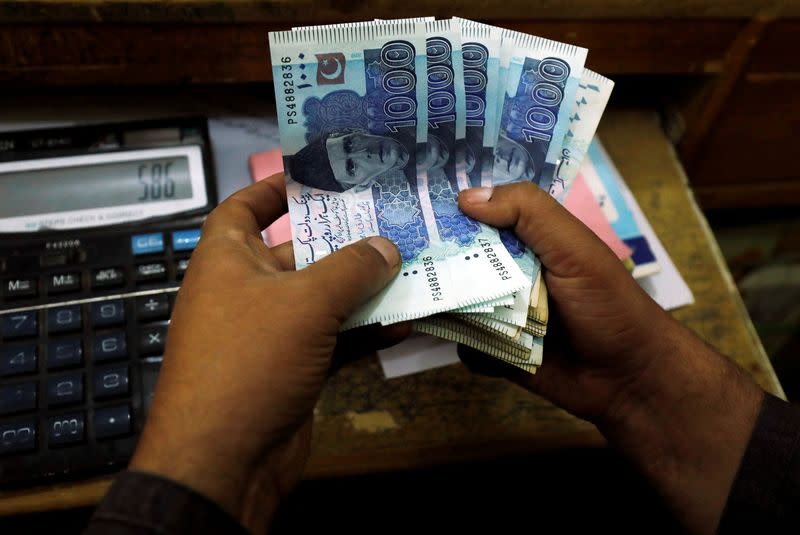Pakistan rupee closes at record low of 300.2 to the dollar

By Ariba Shahid
KARACHI, Pakistan (Reuters) -The Pakistan rupee ended at a record closing low of 300.2 on Thursday, breaching a psychological barrier of 300 to the U.S. dollar, central bank data showed, amid a caretaker government setup in the country and reduced outflow restrictions.
The rupee, which touched a record low for a third consecutive day, has depreciated 2.9% since Aug. 15, after the caretaker government took over.
The government is tasked with overseeing at least one review of the International Monetary Fund (IMF) $3 billion standby arrangement; and steering the country through to a national election that is in theory due to take place by November.
Pakistan imposed import restrictions from 2022 to stem outflows from its shrinking foreign reserves. The removal of those restrictions beginning in June was a condition of the IMF bailout loan to help the crisis-ridden economy.
"When you open up a restricted trade economy, it results in an initial overreaction," said Fahad Rauf, head of research at Ismail Iqbal Securities.
He added that higher inflation expectations have resurfaced on the back of the government imposing energy tariffs and raising petroleum prices.
"These steps are inflationary. They put pressure on the rupee and that leads to dollarisation," he added.
Thursday's close is the third consecutive low for the rupee. The currency closed at 299.6 against the dollar on Wednesday, extending losses from the previous day, when it had weakened to close at 299 to the U.S. unit.
(Reporting by Ariba Shahid in Karachi; Editing by Kim Coghill and Toby Chopra)

 Yahoo Finance
Yahoo Finance 